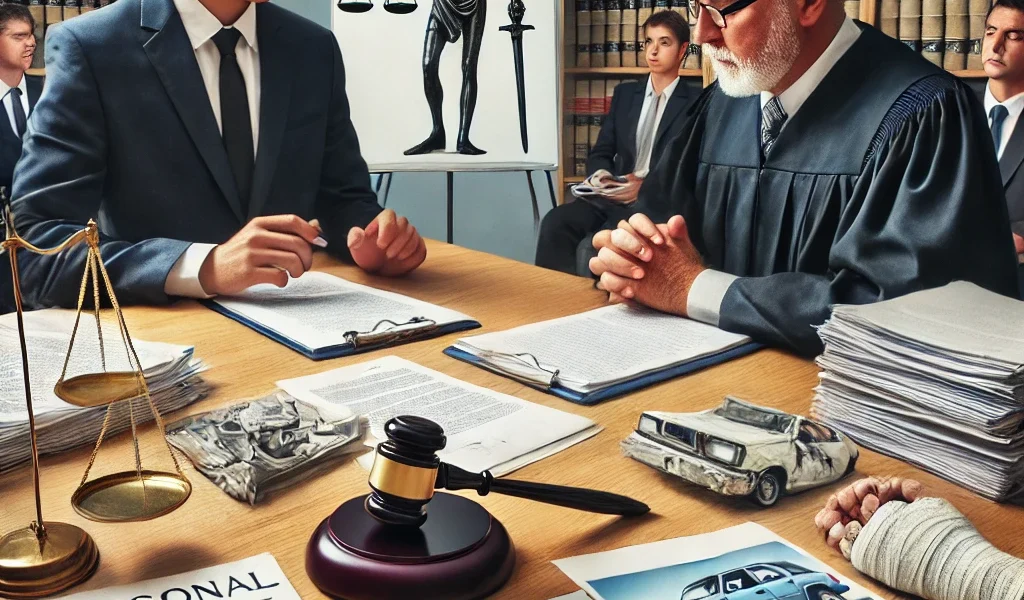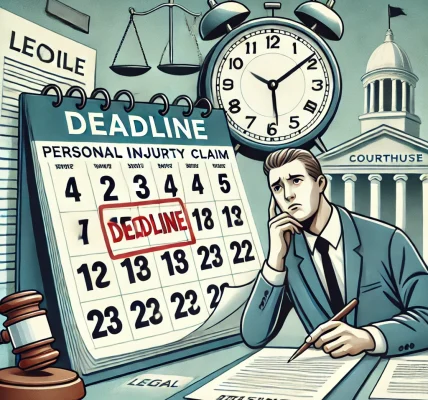Introduction
If you’ve been injured due to someone else’s negligence, gathering the right evidence is crucial to building a strong personal injury claim. The more credible and detailed your evidence, the higher your chances of securing fair compensation for medical expenses, lost wages, and pain and suffering. However, many claimants fail to collect the proper evidence, weakening their case against insurance companies and defendants.
In this guide, we’ll discuss the most effective types of evidence that can help you strengthen your injury claim and maximize your compensation.
1. Medical Records and Bills
Why It’s Important:
Medical records serve as critical proof of your injuries and their severity. Insurance companies and courts rely heavily on medical documentation to assess the impact of the accident on your health and daily life.
What to Collect:
- Doctor’s notes and diagnosis explaining your injuries.
- Emergency room records if you were hospitalized immediately after the accident.
- Prescriptions for pain management or other medications.
- Medical bills for treatments, hospital stays, and surgeries.
- Physical therapy and rehabilitation records.
Pro Tip:
Seek medical attention immediately after the accident, even if you feel fine. Some injuries, like internal bleeding or concussions, may not show symptoms right away.
2. Photographic and Video Evidence
Why It’s Important:
A picture speaks a thousand words. Clear and timestamped photos or videos provide undeniable proof of your injuries, property damage, and the accident scene.
What to Capture:
- Your injuries (cuts, bruises, burns, swelling, etc.).
- The accident scene (skid marks, broken glass, road conditions, etc.).
- Property damage (to your car, bike, or personal belongings).
- Weather conditions if they contributed to the accident.
- Traffic signals and signs to show if rules were violated.
Pro Tip:
If possible, take multiple angles of the scene and injuries. If you are unable to take photos, ask a witness or friend to help.
3. Eyewitness Statements
Why It’s Important:
Witnesses provide unbiased accounts of how the accident happened, which can support your version of events against the opposing party’s claims.
What to Collect:
- Full names and contact details of witnesses.
- Written or recorded statements explaining what they saw.
- Police reports containing witness testimonies.
Pro Tip:
Gather witness information as soon as possible, as memories fade over time.
4. Police and Accident Reports
Why It’s Important:
Police reports serve as official documentation of the accident and often contain crucial details that support your claim.
What’s Included:
- Details of the accident (time, location, and parties involved).
- Statements from both parties explaining their side.
- Officer’s opinion on who was at fault.
- Citations or charges given to the at-fault party.
Pro Tip:
Always request a copy of the police report as soon as it’s available.
5. Surveillance Footage and Dashcam Videos
Why It’s Important:
Security cameras or dashcams can provide indisputable evidence of how the accident occurred, often preventing false claims or disputes.
Where to Look:
- Traffic cameras at intersections.
- Surveillance cameras from nearby businesses or homes.
- Dashcam footage from your vehicle or other drivers.
Pro Tip:
Act quickly to obtain footage, as many surveillance systems overwrite data after a short period.
6. Employment and Wage Loss Records
Why It’s Important:
If your injuries caused you to miss work, employment records help prove your lost wages and financial hardship.
What to Collect:
- Pay stubs and tax returns to show your income before the accident.
- A letter from your employer confirming missed workdays and wages lost.
- Proof of disability leave or reduced hours due to your injury.
Pro Tip:
If you are self-employed, invoices, contracts, or client statements can demonstrate lost income.
7. Expert Testimonies
Why It’s Important:
Expert witnesses provide professional opinions that support your claim, especially in complex cases.
Useful Expert Witnesses:
- Medical professionals to explain your injuries and recovery process.
- Accident reconstruction experts to demonstrate how the accident happened.
- Economists to assess the long-term financial impact of your injuries.
- Vocational experts to prove how your injuries affect your ability to work.
Pro Tip:
Hiring expert witnesses can be costly, but they significantly strengthen your case in court.
8. Journals and Personal Injury Diary
Why It’s Important:
A personal injury diary documents your pain, emotional distress, and recovery process, which can help in calculating pain and suffering damages.
What to Include:
- Daily pain levels and symptoms.
- Challenges performing daily activities.
- Missed events or lifestyle changes due to injuries.
- Emotional impact (stress, anxiety, depression).
Pro Tip:
Write daily entries with detailed descriptions, as they can support your case if insurance companies dispute your suffering.
Conclusion
Building a strong personal injury claim requires compelling and credible evidence. The more thorough your documentation, the better your chances of securing fair compensation. By gathering medical records, photos, witness statements, police reports, and expert opinions, you can effectively prove the severity of your injuries and the liability of the at-fault party.
If you have been injured due to negligence, consult with a personal injury attorney to ensure you collect the right evidence and maximize your compensation.




